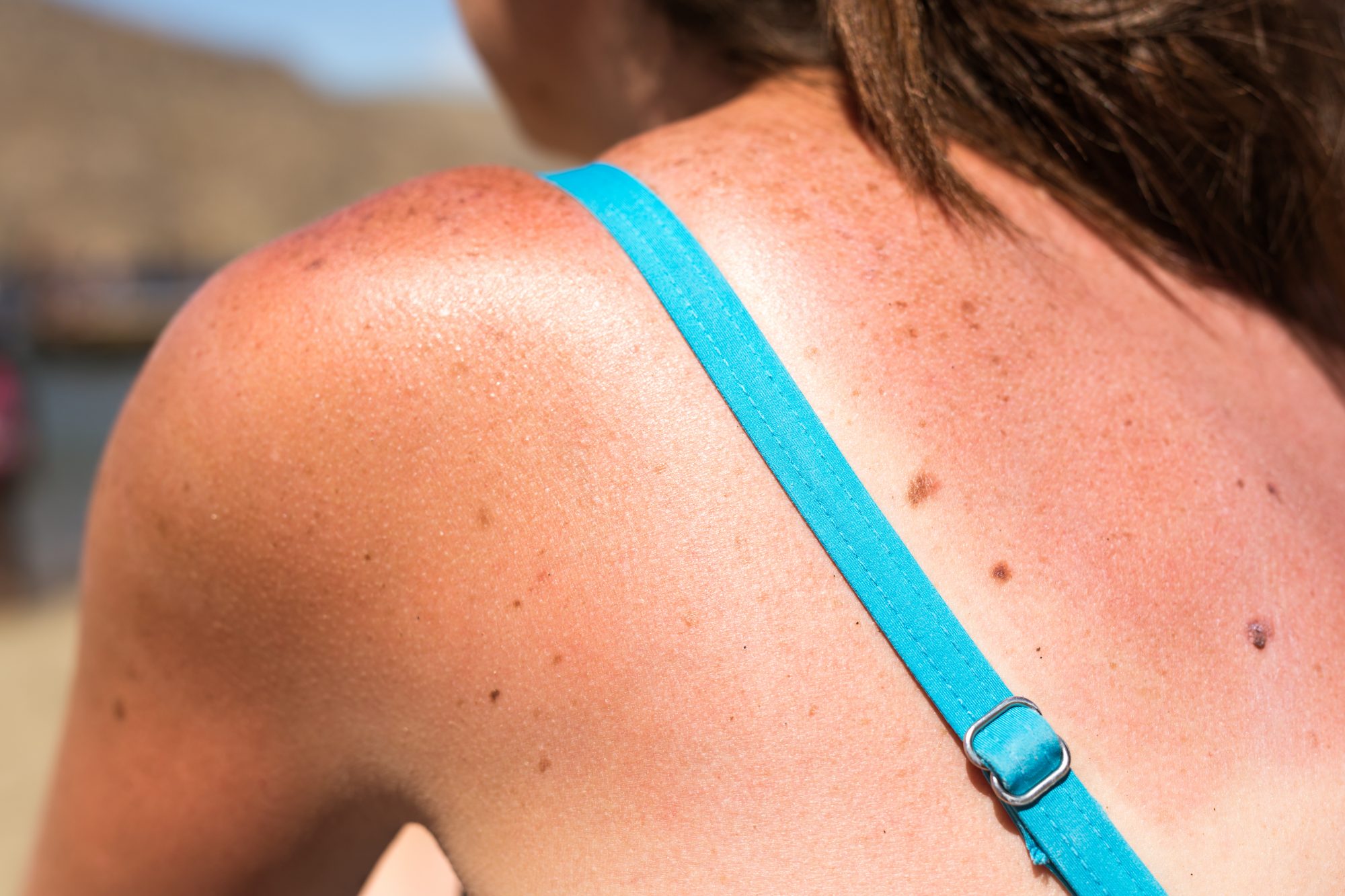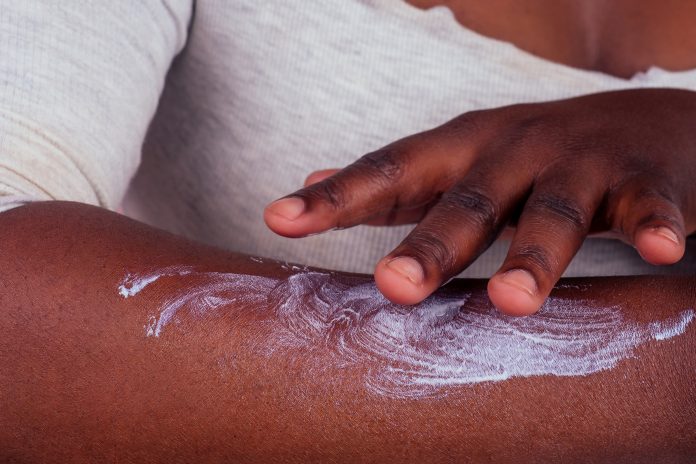Prof Jean-Marie Dangou from the WHO Regional Office for Africa, Congo, spoke to Open Access Government about the different kinds of skin cancer: non-melanoma skin cancers and malignant melanoma
Prof Jean-Marie Dangou, Coordinator, Noncommunicable Diseases Management (NCD), Communicable and Noncommunicable Diseases Cluster (UCN) at the WHO Regional Office for Africa, Congo, details the different kinds of skin cancer, non-melanoma skin cancers and malignant melanoma, in this in-depth interview with Open Access Government. Find out how common skin cancer is today and who is most at risk of getting it. Perhaps you would like to read about the individual risk factors for skin cancer?
Here, Prof Dangou also provides insight into how the above fits in with the wider picture of the burden of cancer in low- and middle-income countries. To what extent is the rise in the number of cases of cancer due to ageing populations and the increasing adoption of risk behaviour such as consumption of unhealthy diets, lack of physical exercise, harmful use of alcohol and tobacco? Also, why is it important that people adopt healthy lifestyles that reduce the risk of cancers? To learn the answers to these questions, read on!
Tell us about the different kinds of skin cancer – non-melanoma skin cancers & malignant melanoma
The skin is made of a variety of cells, many of which are in constant motion. Round basal cells below the surface flatten as they rise to replace dead, flaking squamous cells on the surface. Melanocytes tan the skin in the sunlight, and Merkel cells give skin its ability to sense touch. When these cells become damaged, they may develop into skin cancer.
Skin cancer is the out-of-control growth of abnormal cells in the epidermis, the outermost skin layer, caused by unrepaired DNA damage that triggers mutations. These mutations lead the skin cells to multiply rapidly and form malignant tumours. The main types of skin cancer are non-melanoma skin cancers (basal cell carcinoma, squamous cell carcinoma) and malignant melanoma.
Skin cancer is an abnormal growth of skin cells, which is usually caused by the sun’s harmful rays. Caught early, skin cancer is highly treatable. The type of skin cancer a person gets is determined by where the cancer begins. If the cancer begins in skin cells called basal cells, the person has basal cell/squamous cell skin cancer. When cells that produce the brown pigment known as melanin and give our skin its colour become cancerous, melanoma develops.
Non-melanoma skin cancers are the most common type of skin cancer. Melanoma is often called “the most serious skin cancer” because it tends to spread rapidly.
There are other rare skin cancers such as Merkel cell carcinoma, Kaposi sarcoma and lymphomas.
How common is skin cancer today?
The incidence of both non-melanoma and melanoma skin cancers have been increasing during the past few decades. Currently, between two and three million non-melanoma skin cancers and 132,000 melanoma skin cancers occur globally each year. One in every three cancers diagnosed is a skin cancer.
“It is estimated that a 10% decrease in ozone levels will result in an additional 300,000 non-melanoma and 4,500 melanoma skin cancer cases. These factors lie within everyone’s own responsibility.”
In Africa, there were 27,040 new non-melanoma skin cancers and 8,600 related deaths in 2020. The five-year prevalence in both sexes was 66,370. When approaching non-white African populations, issues related to skin cancer might not be at the forefront of their minds. Although cutaneous malignancies are not extremely common within this group, mortality rates remain much higher compared with their white counterparts.
The global incidence of melanoma continues to increase, however, the main factors that predispose the development of melanoma seem to relate to recreational exposure to the sun and a history of sunburn. As ozone levels are depleted, the atmosphere loses more and more of its protective filter function and more solar UV radiation reaches the Earth’s surface. It is estimated that a 10% decrease in ozone levels will result in an additional 300,000 non- melanoma and 4,500 melanoma skin cancer cases. These factors lie within everyone’s own responsibility.
Who is most at risk of getting skin cancer?
The two main causes of skin cancer are the sun’s harmful ultraviolet (UV) rays and the use of UV tanning beds. People who live in areas with bright, year-round sunlight or those who spend a lot of time outdoors without protective clothing or sunscreen, are at greater risk. Early exposure, particularly for people who had frequent sunburn as a child, also increases skin cancer risks.
Non-melanoma skin cancers are most frequent on parts of the body that are commonly exposed to the sun such as ears, face, neck and forearms. This implies that long-term, repeated UV radiation exposure is a major causal factor.

Within some countries, there is a clear relationship between the increasing incidence of non-melanoma skin cancers with decreasing latitude, i.e. higher UV radiation levels.
People of any skin colour can take the same steps to help prevent skin cancer. Some basic steps include:
- Seek shade whenever possible
- Wear clothing that covers most of the skin, especially during prolonged periods outside.
- Wear sunscreen on exposed areas
- Avoid tanning beds
- Apply suncream 15-20 minutes before going out and reapply ever 2 hours
As well as taking steps to limit direct sun exposure, people of any skin colour should perform self-examinations every month. In a self-examination, a person should check their body for potential tumours. To do so, they can:
- Use a mirror to examine difficult-to-see areas, especially on the bottom of the feet and between the toes.
- If they have dark skin, check the area’s most likely to develop skin cancer, such as the soles of the feet, inside the mouth, the anogenital region, the palms of the hands, and other areas where the skin’s pigment is not as dark.
What are some of the individual risk factors for skin cancer?
- A lighter natural skin colour
- Skin that burns, freckles, reddens easily or becomes painful in the sun.
- Blue or green eyes
- Blond or red hair
- Certain types and having many moles
- Family history of skin cancer
- Personal history of skin cancer
- Older age
Black people can develop skin cancer. This is because they can be exposed to the same environmental risk factors, such as ultraviolet (UV) rays, as people of other races or ethnicities. When skin cancer does occur, the most common places a tumour may develop include areas of lighter skin, such as:
- Mucous membranes, such as inside the mouth
- Under the nails
- The soles of the feet
- The palms of hands
- The anogenital region, which is the area around the groin and anus
- The lower legs
In non-white people, the most commonplace for a tumour to develop is on the plantar or the tissue that runs along the bottom of the foot. This accounts for 30–40% of all skin cancer cases.
For melanoma, the following is a summary of the main human risk factors:
- Unprotected or excessive UV exposure from the sun or indoor tanning
- Weakened immune system due to a medical condition or medications
- Many moles: The more moles you have on your body, the higher your risk for melanoma. Also, having large moles (larger than a tip of a pencil eraser), or any atypical moles, increases the risk for melanoma
- Fair skin: Melanoma occurs more frequently in people with fair skin, light eyes and light or red hair
- Skin cancer history: People who have already had melanoma or non-melanoma skin cancers run a greater risk of developing melanoma in the future
- The incidence of malignant melanoma in white populations generally increases with decreasing latitude, with the highest recorded incidence occurring in Australia, where the annual rates are 10 and over 20 times the rates in Europe for women and men respectively
- Genetics: Melanoma can run in families – one in every 10 patients has a family member who also has had the disease.
“The most common risk factors for cancer include ageing, tobacco, sun exposure, radiation exposure, chemicals, and other substances, some viruses and bacteria, certain hormones, family history of cancer, alcohol, poor diet, lack of physical activity,
or being overweight.“
How does this fit in with the wider picture of the burden of cancer in low- and middle-income countries?
An estimated 27,040 new non-melanoma skin cancers and 8,600 related deaths were recorded in 2020. This is less than 6% of the global picture. The five-year prevalence in both sexes was 66,370. Although the overall cancer burden in the African region is dominated by breast, cervical and prostate cancers, the cancer profile in Sub-Saharan Africa is quite diverse.
To what extent would you say that the rise in the number of cases of cancer is due to ageing populations and the increasing adoption of risk behaviour such as consumption of unhealthy diets, lack of physical exercise, as well as the harmful use of alcohol and tobacco?
The incidence rates for cancer overall climb steadily as age increases, from fewer than 25 cases per 100,000 people in age groups under age 20, to about 350 per 100,000 people among those aged 45–49, to more than 1,000 per 100,000 people in age groups 60 years and older.
The most common risk factors for cancer include ageing, tobacco, sun exposure, radiation exposure, chemicals, and other substances, some viruses and bacteria, certain hormones, family history of cancer, alcohol, poor diet, lack of physical activity, or being overweight.
The use of tobacco products is the single most important factor in increasing cancer risk. The hazards of tobacco are due to a large number of carcinogenic compounds: those which are already in the tobacco product and those that form during smoking.
The main reasons why healthy people get cancer are due to genetics and certain environmental or behavioural triggers. The tendency to develop some types of cancer is believed to be inherited — that is, the genes you were born with might carry a predisposition for cancer. The strongest inherent risk factor is a family history of breast cancer, followed by mutated changes in your BRCA1 or BRCA2 genetic makeup. With this history, you’re also at a higher risk for ovarian or cervical cancers.
Why is it important that people adopt healthy lifestyles that reduce the risk of cancers?
Bad habits are hard to break, but once you adopt a healthier lifestyle, you won’t regret this decision. Healthy habits reduce the risk of certain diseases, improve your physical appearance and mental health, and give your energy level a much-needed boost.
Healthy lifestyles should be characterised by eating a healthy diet; getting regular exercise; not smoking; staying at a healthy weight and limiting alcohol.
Your ability to maintain healthy habits that lead to a lower amount of stress in your life is just one step in a larger stress management game plan. If you are suffering from frequent stress, it’s best to take a deeper look at each stage so you can more effectively manage your stress.
Step 1: Understand stress (the basics you need to know). Step 2: Assess your situation.
Step 3: Stop tension right now.
Step 4: Reduce lifestyle stress.
Step 5: Maintain healthy habits.
Is there anything you would like to add?
There is a large opportunity for cancer prevention and control programmes to improve health outcomes in Africa. Comparing incidence and mortality rates of all cancers combined across countries, large disparities in terms of incidence-to-mortality ratios are apparent. Large differences between incidence and mortality suggest poor outcomes and substantial case-fatality from cancers. Yet primary prevention remains key in Sub-Saharan Africa, where there is a need to prioritise the most cost-effective means of reducing the cancer burden. Improved access to diagnosis and treatment, including palliative care, is also essential to improve survival and limit suffering from the disease in the Region.
We must act now to beat cancer and other non-communicable diseases. I call on partners in prevention from various sectors across the nations to address cancers as a major health problem. Many partners are essential to this effort, including federal, state, tribal, local, and territorial governments; members of the business, health care, and education sectors; community, non-profit, and faith-based organisations; and individuals and families.











